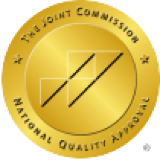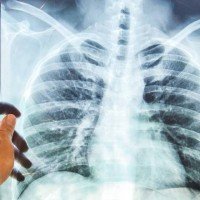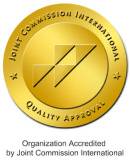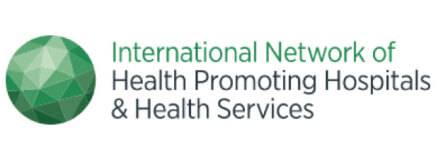Current Situation of Lung Cancer
Lung cancer is the most common cancer among men in Hong Kong and ranks second among women. According to data from the Hong Kong Cancer Registry under the Hospital Authority, a total of 5,707 cases of lung cancer were reported in 2022, accounting for 16.1% of all cancer cases. Among them, 3,340 cases were male patients, while 2,367 cases were female patients, with a male-to-female ratio of approximately 1.4 to 1.
Most lung cancer patients are over the age of 40, with the median age of onset being around 70 years. By the age of 75, the cumulative risk of developing lung cancer is 1 in 22 for men and 1 in 35 for women.
What is Lung Cancer?
Lung cancer is a type of cancer caused by the abnormal growth of cells in the lungs. It is mainly classified into non-small cell lung cancer (NSCLC), which includes adenocarcinoma, squamous cell carcinoma, and large cell carcinoma, and small cell lung cancer (SCLC). Among non-smokers, the most common type of lung cancer is adenocarcinoma.
Symptoms of Lung Cancer
Early-stage lung cancer may not present obvious symptoms. However, as it progresses, the following symptoms may appear.
- Persistent cough
- Blood in sputum
- Recurring lung infections or slow recovery
- Hoarseness in voice
- Chest discomfort or pain when coughing or taking deep breaths
- Loss of appetite and unexplained weight loss
- Frequent fatigue
Etiology and Risk Factors of Lung Cancer
Smoking is a well-known major risk factor for lung cancer. However, there are many other risk factors, such as secondhand smoke, cooking oil fumes, exposure to carcinogens (arsenic, beryllium, cadmium, chromium, nickel, asbestos, silica, quartz, dichloromethyl ether, chloromethyl methyl ether, coal, tar, asphalt, soot, mustard gas, diesel exhaust, fine particulate matter PM2.5), radiation (alpha particles, radon, plutonium-239, X-rays, gamma rays), and family history/genetics.
In many cases, the cause remains unclear, and numerous cases do not exhibit the risk factors listed above.
How is Lung Cancer Diagnosed?
- Early Screening: Low-dose spiral computed tomography (CT) is the only effective screening method for detecting early-stage lung cancer. In high-risk groups, it can reduce lung cancer mortality by 20%.
- Initial Examination: A chest X-ray can assess lung conditions, while sputum tests are commonly used to check for tumors formed in the lung airways.
- Imaging Tests: Computed tomography (CT) scans effectively detect tiny tumors and provide 3D images of the tumor, while also assessing whether the tumor has spread to nearby lymph nodes. PET-CT scans are highly useful for detecting cancer metastasis. Magnetic resonance imaging (MRI) can be used to check if lung cancer has spread to the brain or spinal cord.
- Tissue Biopsy: Using fine-needle aspiration or surgical methods to extract a small tissue sample for pathological examination and molecular classification is the gold standard for confirming the diagnosis and determining the type of lung cancer.
- Liquid Biopsy Genetic Testing: By analyzing circulating tumor DNA/RNAreleased into the blood or other body fluids during cancer cell division, this test checks for genetic mutations with an accuracy of approximately 70-80%. It is suitable for patients unable to undergo tissue biopsy due to inaccessible tumor locations and can guide the selection of targeted therapies.
Treatment Methods for Lung Cancer
There are currently many effective treatment methods to manage lung cancer, including surgery, chemotherapy, and newer approaches like targeted therapies and immunotherapy, all of which help patients fight the disease. For early-stage non-small cell lung cancer (NSCLC), the primary approach is surgery or radiotherapy, depending on risk factors, potentially supplemented by radiotherapy, chemotherapy, targeted therapies, or immunotherapy. For intermediate-stage NSCLC, the main treatment involves concurrent radiotherapy and chemotherapy, supplemented by immunotherapy or targeted therapy. For advanced-stage NSCLC, the goal is to alleviate symptoms and prolong survival, primarily using chemotherapy, targeted therapies, immunotherapy, or a combination of these methods based on pathological and molecular classification. For small cell lung cancer (SCLC), treatment mainly involves chemotherapy and immunotherapy (for extensive-stage disease), supplemented by chest radiotherapy and prophylactic cranial irradiation.
Surgical Resection
Surgical resection involves removing the lung cancer tumor along with some surrounding healthy tissue. The choice of surgical method varies depending on the tumor's size, stage, and extent of spread. Some cases may require only the removal of a portion of lung tissue or a single lobe, while others may necessitate a complete lung removal.
Radiotherapy
For early-stage patients who are unsuitable for surgery due to age or other health conditions, radiotherapy can serve as a localized curative method. For advanced-stage patients, it can alleviate lung cancer symptoms such as airway or vein blockages, as well as relieve pain from bone metastases or symptoms from brain metastases. During the process, high-energy beams are directed at the tumor from outside the body, or radiation can be delivered internally by placing it in fine needles or catheters. The latest techniques include stereotactic body radiotherapy (SBRT), intensity-modulated radiotherapy (IMRT) combined with image-guided radiotherapy (IGRT), which allow for more precise targeting of the tumor while minimizing damage to surrounding healthy tissues.
Chemotherapy
Uses highly toxic drugs to kill cancer cells and prevent their continued growth. It can be administered before or after surgery to shrink tumors or reduce the risk of recurrence. For advanced-stage cancer, chemotherapy can also be used to alleviate patients' symptoms.
Targeted Therapy
This treatment is determined based on the genetic testing results of the patient’s cancer cells, such as mutations in genes like EGFR, ALK, ROS-1, RET, NTRK, MET, BRAF, KRAS, HER2, NRG1, and others. If these genetic alterations are detected in the patient, corresponding targeted drugs can be used. There are currently many types of targeted drugs available: some block growth signals within cells to stop cancer cell proliferation, while others, such as anti-VEGF drugs, inhibit the formation of new blood vessels that feed the cancer, effectively starving the cancer cells.
Immunotherapy
Immunotherapy harnesses the patient’s own immune response to fight cancer cells. It activates dormant T-cells in the immune system, enabling them to recognize and attack cancer cells. This treatment generally has milder side effects and can be used as an adjunct therapy before or after surgery, or for advanced-stage lung cancer.
Lung Cancer Prevention Methods
Lung cancer is one of the most common cancers worldwide, and early prevention is crucial to reducing its incidence. Here are effective preventive measures:
- Quit Smoking & Avoid Secondhand Smoke: Quitting smoking significantly lowers the risk, and avoiding secondhand smoke is equally important.
- Maintain Good Air Quality: Minimize exposure to polluted air and carcinogens such as asbestos, radon, and diesel exhaust, which can contribute to lung cancer development.
- Exercise: engage in regular physical activity to boost immunity and reduce cancer risk.
- Regular Health Screenings: High-risk individuals (e.g., long-term smokers, those with a family history of lung cancer) should undergo low-dose computed tomography (LDCT) scans for early detection, improving treatment success rates.
Lung Cancer Survival Rates
The survival rate for lung cancer primarily depends on the stage and type of cancer. According to data from the Hong Kong Cancer Registry, the overall five-year relative survival rate for lung cancer patients is 21.8%. Specifically, the five-year relative survival rates are 72.4% for Stage I patients, 45.4% for Stage II, 24.6% for Stage III, and only 7.8% for Stage IV patients. Non-small cell lung cancer (NSCLC) is the most common type of lung cancer, with survival rates varying by stage1.
- Stage I: The tumor is localized to the lungs and has not spread to the lymph nodes. Patients who undergo surgical resection at this stage have a five-year survival rate of about 80%1.
- Stage II: The tumor has spread to nearby tissues or the hilar lymph nodes. The five-year survival rate for this stage is approximately 40% to 50%2.
- Stage III: The tumor has further spread to the mediastinal lymph nodes or nearby organs. The five-year survival rate at this stage is about 30% to 40%2.
- Stage IV: The tumor has metastasized to other parts of the body. The five-year survival rate for this stage is around 10%2.
Small cell lung cancer (SCLC) accounts for about 10% to 15% of all lung cancer cases and grows quickly, making it prone to early spread. Due to often being diagnosed at an advanced stage, the five-year survival rate for SCLC patients is relatively low. For patients with limited disease, the average survival time is about 20 months, with a five-year survival rate of approximately 20%. For those with extensive small cell lung cancer, the five-year survival rate is less than 1%2.
References:
1. Hong Kong Special Administrative Region Government, Cancer Online Resource Centre, Lung Cancer
2. Hong Kong Anti-Cancer Society, Non-Small Cell Lung Cancer and Small Cell Lung Cancer
FAQ
What are the risks of undergoing surgery?
Lung cancer surgery is considered major surgery, and the main risks include:
- Complications: Such as pneumonia, blood clots, and wound infections.
- Decreased lung function: Some patients may experience breathing difficulties after lung resection and may require postoperative rehabilitation.
- Risk of surgical failure: The risk is higher, especially if the tumor is large or located near major blood vessels.
The level of surgical risk depends on various factors, including the stage of the tumor, the extent of the surgery, the patient's age, and any comorbidities. Generally, the larger the surgical extent, the higher the risk; and the older the patient and the more comorbidities present, the greater the risk. However, advancements in minimally invasive techniques (such as thoracoscopic or robotic surgery) have significantly reduced surgical risks and shortened recovery times.
Is lung cancer prone to recurrence?
Lung cancer has a high risk of recurrence, especially in patients with intermediate to advanced stages. However, through regular follow-up, healthy lifestyle choices, and appropriate adjuvant therapies, the likelihood of recurrence can be reduced, thereby improving survival rates. Patients should work closely with their healthcare team to ensure they receive the best care and treatment plans during their recovery process.
What should lung cancer patients be aware of after completing treatment?
After completing treatment, lung cancer patients should maintain regular follow-up examinations, adopt a healthy lifestyle, actively manage side effects, and be mindful of preventing other health risks. Through comprehensive care and adjustments, patients can improve their survival rates and quality of life while reducing the risk of recurrence. If any physical discomfort or questions arise, patients should consult their doctor promptly to ensure the best recovery outcomes.






















